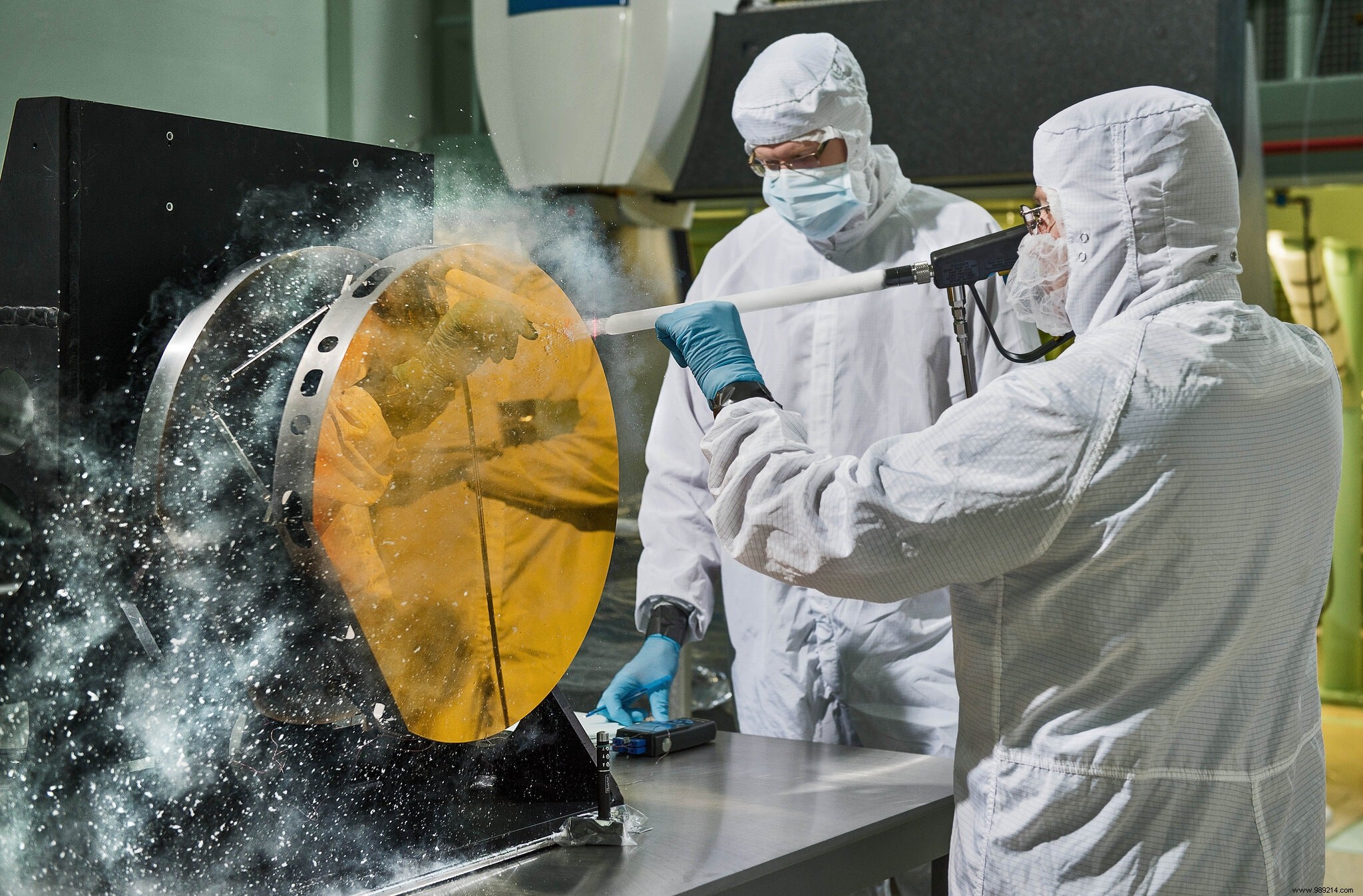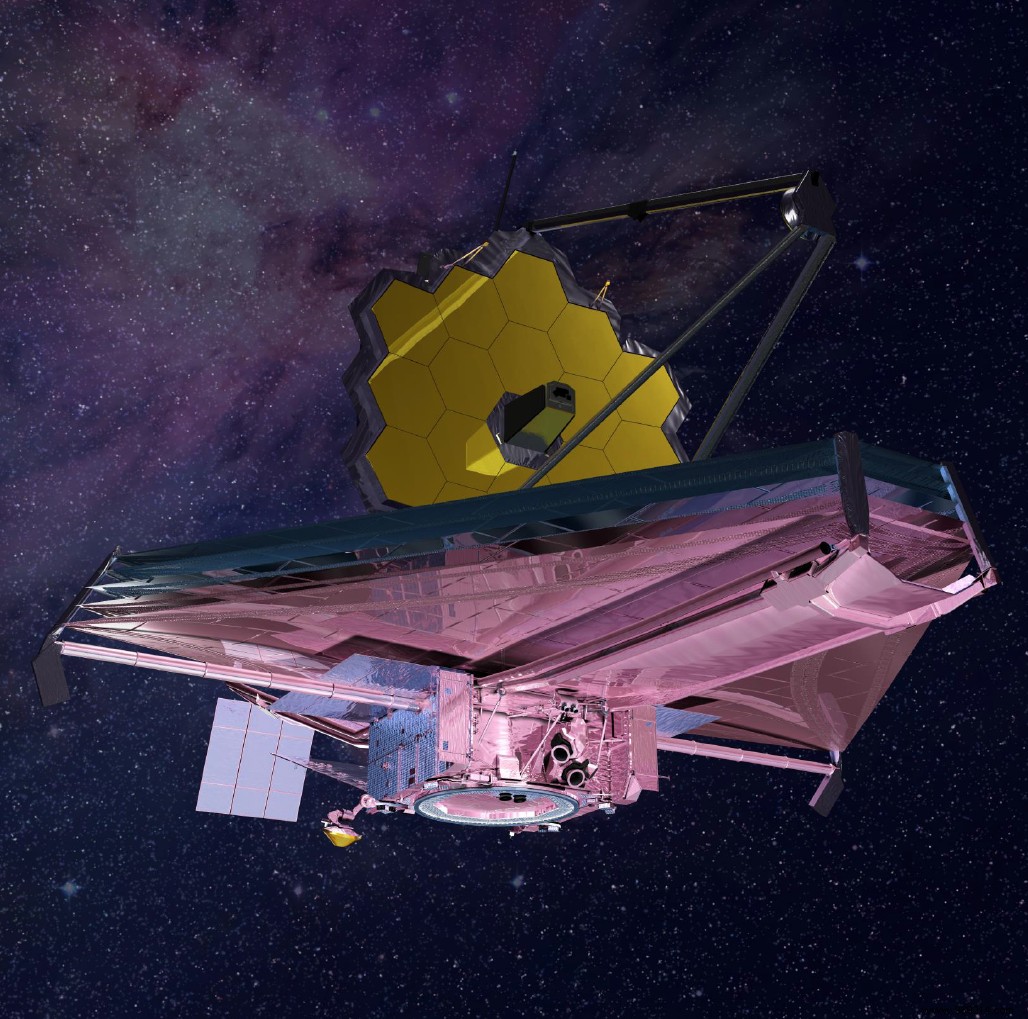The James Webb Telescope is one of the most anticipated space observatories, with a launch normally scheduled for fall. Positioned 1.5 million kilometers from Earth on the side opposite the Sun, it will be able to probe the Universe like never before.
Considered the successor to Hubble, the James Webb Telescope was already in the papers even before it was put into orbit in 1990. At the time, astronomers thought that such an instrument could cost less than a billion dollars and be ready before 2010. Thirty years, 8.8 billion dollars, several mishaps and budget crises and a threat of cancellation by Congress later, the James Webb Telescope is finally ready. It should normally be launched on October 31 on board an Ariane 5 rocket , ESA, from Guyana.
At a recent meeting of the American Astronomical Society, technicians and engineers observed this incredible telescope fully deployed for the last time (we hope). "Next time the observatory looks like this , it will be positioned beyond the Moon and appear to us as a point source of magnitude 17 ", said NASA's Eric Smith.
In its white room in Los Angeles, the telescope then looked like a giant sunflower resting on a silver surfboard. The petals of this flower are made up of 18 gold-plated beryllium hexagons joined together to form a mirror more than six meters in diameter . The surfboard on which it will float forever is a five-layer sandwich made of Kapton, responsible for protecting the telescope from the heat and glare of the Sun.
Folded up in their rocket, the heat shield and its mirror will have to be deployed more than a million kilometers from Earth. To do this, about 180 maneuvers will be necessary in the first few weeks after launch. The steps of this deployment have been repeated many times in recent years.

The James Webb Telescope is almost three times larger than Hubble and seven times more powerful in its ability to discern the most distant lights of the universe.
Its main mission will be to explore a realm of cosmic history inaccessible to Hubble. About 150 million to a billion years after the beginning of time, the first stars and galaxies were born. From then on, their lights began to make their way through the dark fog of hydrogen gas that had prevailed since the end of the Big Bang. We don't know exactly how it all happened. Once operational, the JWT will be there to guide us.
This mission requires the telescope to be set to a different type of light than our eyes or Hubble. As the expanding cosmos rapidly pushes these early stars and galaxies away from our vantage point, their light continues to shift red on longer and longer wavelengths that can be picked up by the JWT .
To detect these faint heat emanations, the telescope will need to be kept cool (less than 45°C above absolute zero), hence the need for this "shield five-layer solar panel that will keep the telescope in permanent, freezing shade.

It turns out that these infrared emissions will also be ideal for studying exoplanets. The JWT is expected to turn toward the Trappist-1 system, just 40 light-years from Earth. As a reminder, this system contains seven planets, of which are rocky worlds the size of the Earth evolving in the so-called habitable zone of their star. Among other things, the telescope will notably be able to "sniff" their atmosphere, a first step to determine their potential for habitability .
On the calendar side, we still do not know exactly what the first targets of the telescope will be. So far, 4332 astronomers from 44 countries have submitted proposals for the instrument's first round of observations, according to figures provided by Christine Chen of the Space Telescope Science Institute.
The fact remains that its launch in the fall will be one of the major events in space science planned for this year, with the first steps of the Perseverance rover on the planet Mars. With these two machines in working order, it's not crazy to imagine that we could learn of the existence of extraterrestrial life in one form or another within the next decade, whether it's lurking under the surface of an icy moon or under a Martian rock.